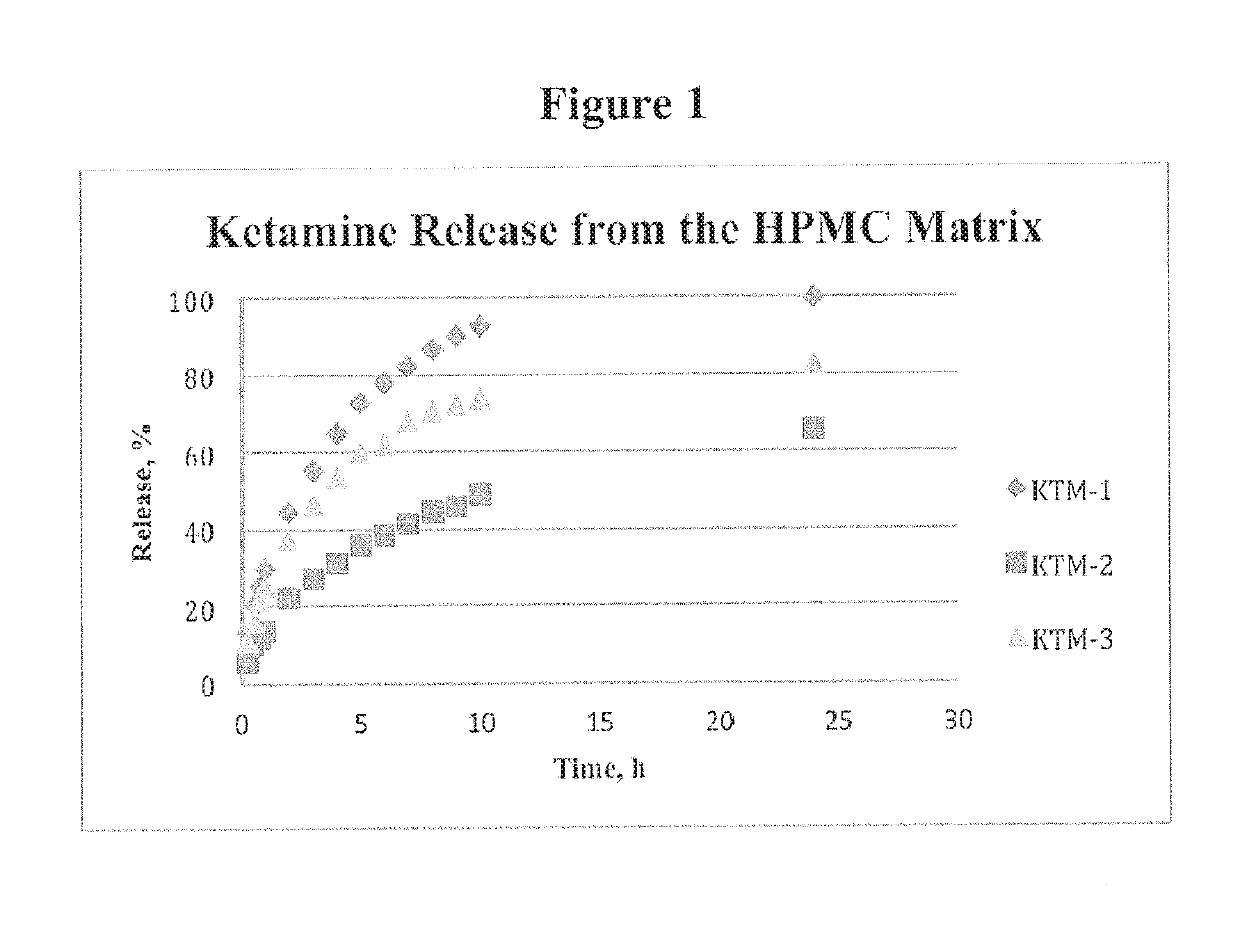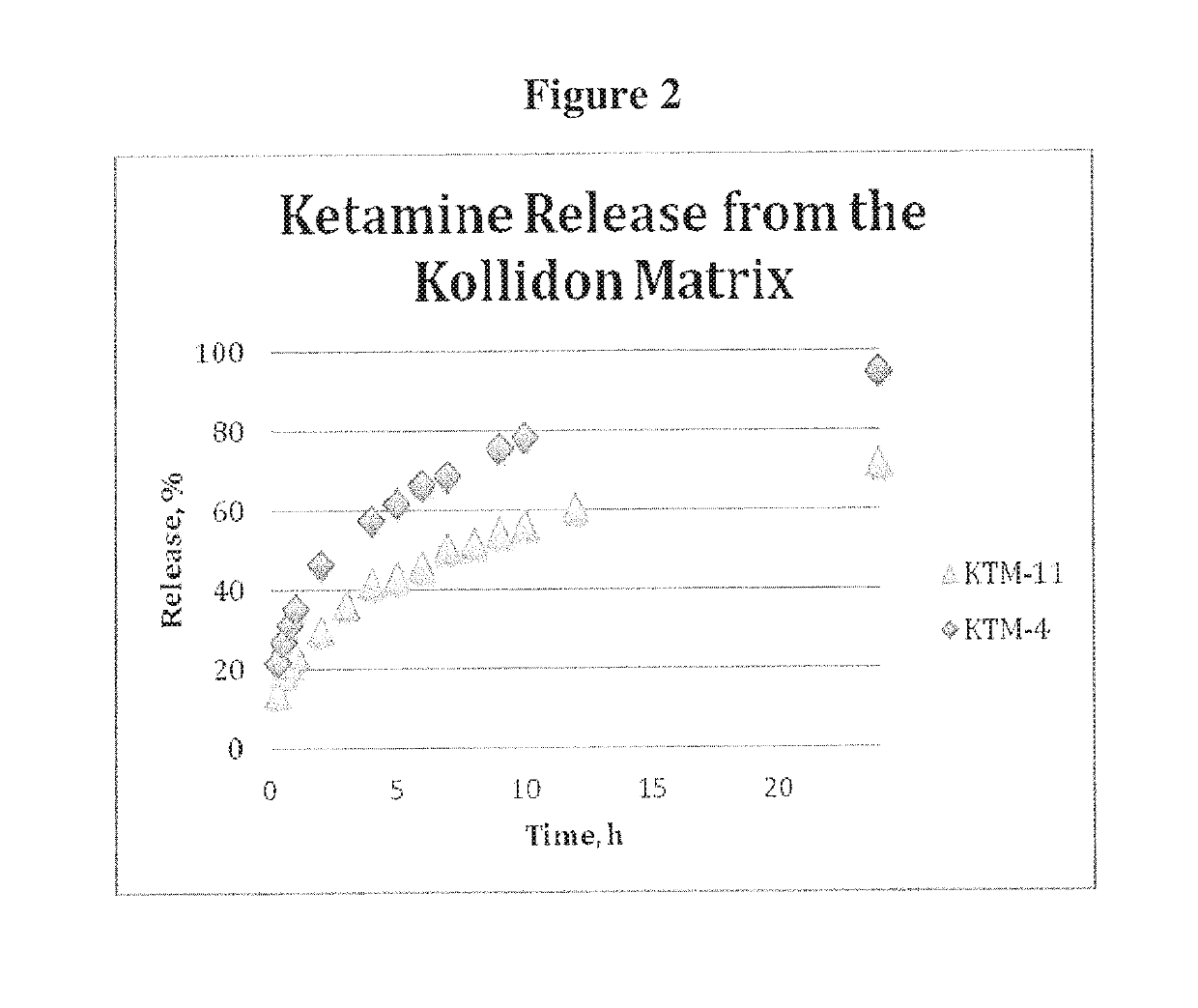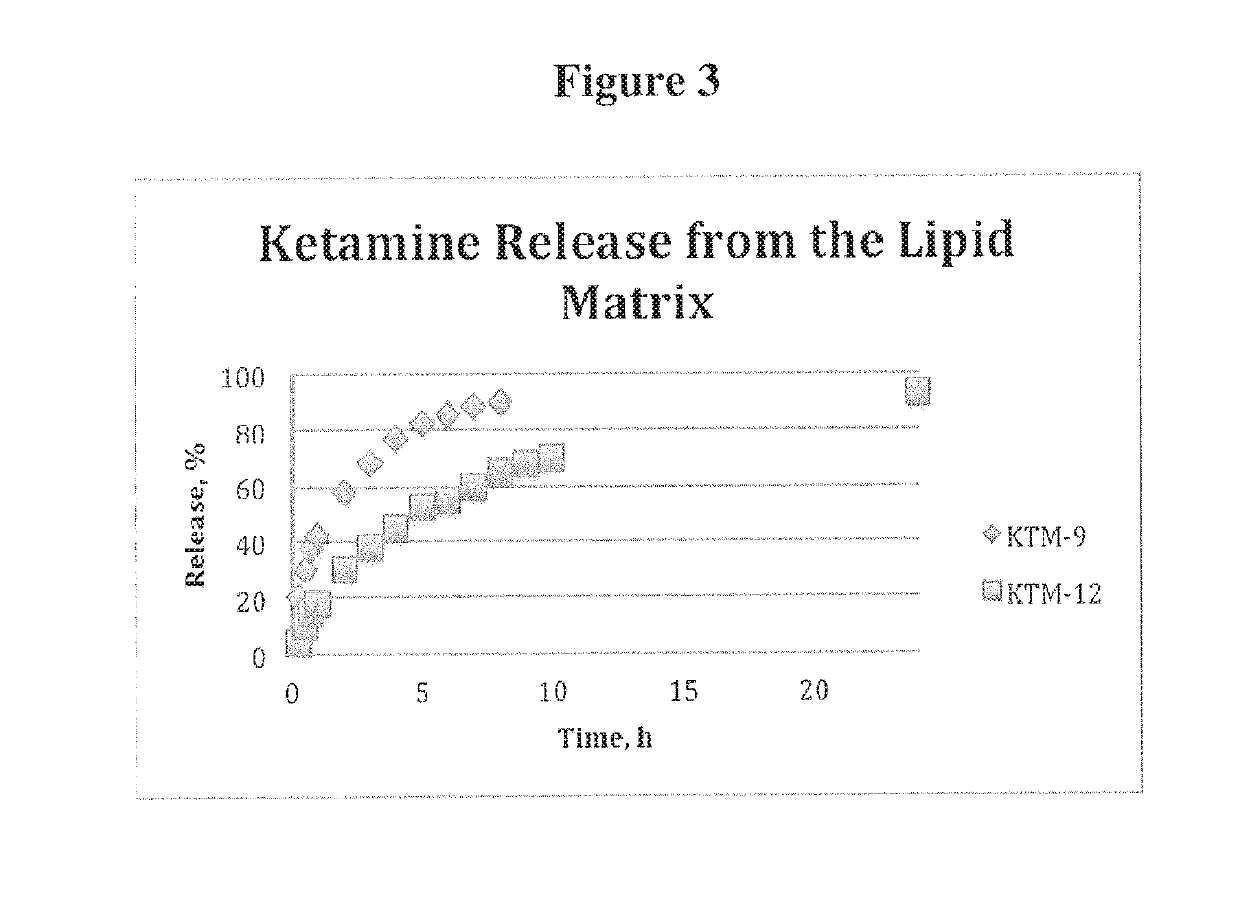Neuro-attenuating ketamine and norketamine compounds, derivatives thereof, and methods
a technology of ketamine and norketamine, which is applied in the field of neuroattenuating ketamine and norketamine compounds, derivatives thereof, can solve the problems of inability to provide solid dose forms of ketamine, more pronounced side effects, immediate repercussions, etc., and achieve the effect of effective treatment, prevention and/or managemen
- Summary
- Abstract
- Description
- Claims
- Application Information
AI Technical Summary
Benefits of technology
Problems solved by technology
Method used
Image
Examples
example 1
[0374]Formulation of the Controlled Release Ketamine Tablet using a Matrix Based on HPMC and Starch
[0375]1, by dry granulation using a controlled release matrix based on a combination of hydroxypropyl methyl cellulose (HPMC) Methocel KM100 CR and pre-gelatinized starch Starch 1500. Methocel, Starch 1500, ketamine and Cab-o-Sil (colloidal silicon dioxide) were coarsely mixed and passed through a 40-mesh screen to break-up agglomerates. Microcrystalline cellulose was then added and the mixture blended in a 100 ml tube blender for 15 minutes at 200 rev / min. The full composition of ketamine tablet KTM-1 is presented in Table 1.
[0376]After blending, magnesium stearate was added and blended for additional 3 minutes. The 200 mg convex-shaped tablets containing 20 mg of ketamine were compressed using a TDP tablet press and 9 mm dye. By applying a compression force of 8 kN, the tablets of the hardness in the range 13-15 kP were generated. The tablet dissolution was carried out in a Type II d...
example 2
[0380]Formulation of the Neuro-Attenuating Ketamine Tablet using HPMC and Polyacrylate
[0381]Ketamine was formulated into a tablet form by dry granulation following the general procedure as described in the Example 1. The control formulation KTM-1 presented in Table 1 was supplemented by adding polyacrylic acid, Carbopol 974 NF (Noveon), for a total content of 16.7% and 9.1% to make compositions KTM-2 and KTM-3, respectively (See Table 1).
[0382]Consequently, this addition led to a surprisingly dramatic slowing down of the release (FIG. 1). Compared to the KTM-1, at the 10 hour time point KTM-2 showed only 49% of the drug was released; and at 24 hours 62% of the ketamine was released.
[0383]Moreover, reducing the level of Carbopol (i.e., polyacrylic acid) to about 9% in KTM-3 generated a release profile that matched closely to a window of 24-h, for once-a-day ketamine applications. The amount of the drug released at 24 h was about 82%. Composition KTM-3 was considered for development g...
example 3
[0384]Formulation of Sample 36 Hour Neuro-Attenuating Ketamine Tablet with Kollidon SR
[0385]Based on the potential for additional in situ electrostatic interactions of ketamine with the polymer matrix to retain the drug, a polyvinylacetate / povidone based polymer (Kollidon® SR) was elected. It consists of 80% Polyvinylacetate and 19% Povidone in a physical mixture, stabilized with 0.8% sodium lauryl sulfate and 0.2% colloidal silica. Kollidon SR possesses good compressibility and typically displays drug release profile independent of the dissolution medium (pH and salt / ion content).
[0386]A 200 mg tablets containing 20 mg of ketamine was produced using protocol similar to Example 2, with a mixture of Kollidon SR and microcrystalline cellulose to produce formulation KTM-11. The tablet composition is presented in the Table 2. The tablets displayed a good hardness, in the range of 15-20 kP, and released 56% of the drug at 10 hours and 78% at 24 hours, with full release expected to be bet...
PUM
| Property | Measurement | Unit |
|---|---|---|
| weight | aaaaa | aaaaa |
| weight | aaaaa | aaaaa |
| concentration | aaaaa | aaaaa |
Abstract
Description
Claims
Application Information
 Login to View More
Login to View More - R&D Engineer
- R&D Manager
- IP Professional
- Industry Leading Data Capabilities
- Powerful AI technology
- Patent DNA Extraction
Browse by: Latest US Patents, China's latest patents, Technical Efficacy Thesaurus, Application Domain, Technology Topic, Popular Technical Reports.
© 2024 PatSnap. All rights reserved.Legal|Privacy policy|Modern Slavery Act Transparency Statement|Sitemap|About US| Contact US: help@patsnap.com










